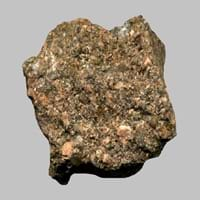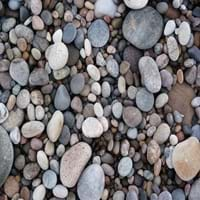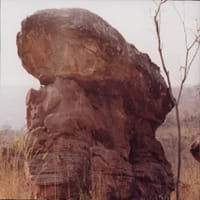Arkose Rock
Definition
0
Definition
Arkose is a sedimentary rock, specifically a type of sandstone containing at least 25% feldspar 0
History
0
Origin
France 0
Discoverer
Alexandre Brongniart 0
Etymology
From Auvergne region of France used by a French geologist Alexandre Brongniart in 1826 who applied this term to some feldspathic sandstones 0
Class
Sedimentary Rocks 0
Sub-Class
Durable Rock, Hard Rock 0
Family
0
Group
Not Applicable 0
Other Categories
Coarse Grained Rock, Opaque Rock 0
Texture
0
Texture
Clastic 0
Color
Reddish Brown 0
Maintenance
Less 0
Durability
Durable 0
Water Resistant
Yes 0
Scratch Resistant
Yes 0
Stain Resistant
Yes 0
Wind Resistant
No 0
Acid Resistant
Yes 0
Appearance
Rough and Dull 0
Uses
0
Architecture
0
Interior Uses
Decorative Aggregates, Homes, Interior Decoration 0
Exterior Uses
Paving Stone, Office Buildings 0
Other Architectural Uses
Whetstones 0
Industry
0
Construction Industry
Cement Manufacture, Construction Aggregate, for Road Aggregate, Production of Glass and Ceramics, Raw material for the manufacture of mortar 0
Medical Industry
Not Yet Used 0
Antiquity Uses
Artifacts, Sculpture, Small Figurines 0
Other Uses
0
Commercial Uses
In aquifers, Soil Conditioner, Source of Magnesia (MgO), Tombstones 0
Types
0
Types
Not Available 0
Features
Available in Lots of Colors and Patterns, Generally rough to touch, Is one of the oldest rock 0
Archaeological Significance
0
Monuments
Not Yet Used 0
Famous Monuments
Not Applicable 0
Sculpture
Used 0
Famous Sculptures
Data Not Available 0
Pictographs
Not Used 0
Petroglyphs
Not Used 0
Figurines
Used 0
Fossils
Present 0
Formation
0
Formation
Arkose rock forms from the weathering of feldspar-rich igneous or metamorphic rock, most commonly granitic rocks, which are primarily composed of quartz and feldspar. 0
Composition
0
Mineral Content
Calcite, Clay, Clay Minerals, Feldspar, Micas, Quartz 0
Compound Content
Aluminium Oxide, CaO, Iron(III) Oxide, Potassium Oxide, MgO, Sodium Oxide, Silicon Dioxide 0
Transformation
0
Metamorphism
No 0
Types of Metamorphism
Not Applicable 0
Weathering
Yes 0
Types of Weathering
Biological Weathering, Chemical Weathering, Mechanical Weathering 0
Erosion
Yes 0
Types of Erosion
Coastal Erosion, Glacier Erosion, Water Erosion, Wind Erosion 0
Properties
0
Physical Properties
0
Hardness
6-7 0
Grain Size
Coarse Grained 0
Fracture
Conchoidal 0
Streak
White 0
Porosity
Highly Porous 0
Luster
Dull 0
Compressive Strength
Not Available 0
Cleavage
Not Available 0
Toughness
Not Available 0
Specific Gravity
0 0
Transparency
Opaque 0
Density
Not Available 0
Thermal Properties
0
Specific Heat Capacity
Not Available 0
Resistance
Heat Resistant, Impact Resistant, Pressure Resistant 0
Reserves
0
Deposits in Eastern Continents
0
Asia
China, India, Kazakhstan, Mongolia, Russia, Uzbekistan 0
Africa
Namibia, Nigeria, South Africa 0
Europe
Austria, Denmark, Germany, Great Britain, Netherlands, Norway, Poland, Sweden, Switzerland, United Kingdom 0
Others
Greenland 0
Deposits in Western Continents
0
North America
Canada, USA 0
South America
Brazil 0
Deposits in Oceania Continent
0
Australia
New South Wales, New Zealand 0
Information about Arkose
Rocks are naturally occurring solids which are composed of minerals & have been used by humans since ages. From Stone Age, rocks are used for various purposes. Also, the metals and minerals found in rock play an important role in our life. Get to know all the Arkose Uses. We have provided you with all information about Arkose rock here. Arkose is a sedimentary rock, specifically a type of sandstone containing at least 25% feldspar. Arkose is available in reddish brown colors. The streak of a rock is the color of powder produced when it is dragged across an unweathered surface. The streak of Arkose is white. Get to know more about Arkose rock and characteristics of Arkose rock in the next sections.
|
||
|
||
|









